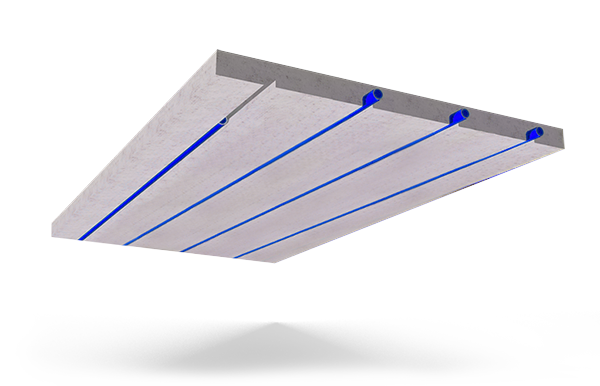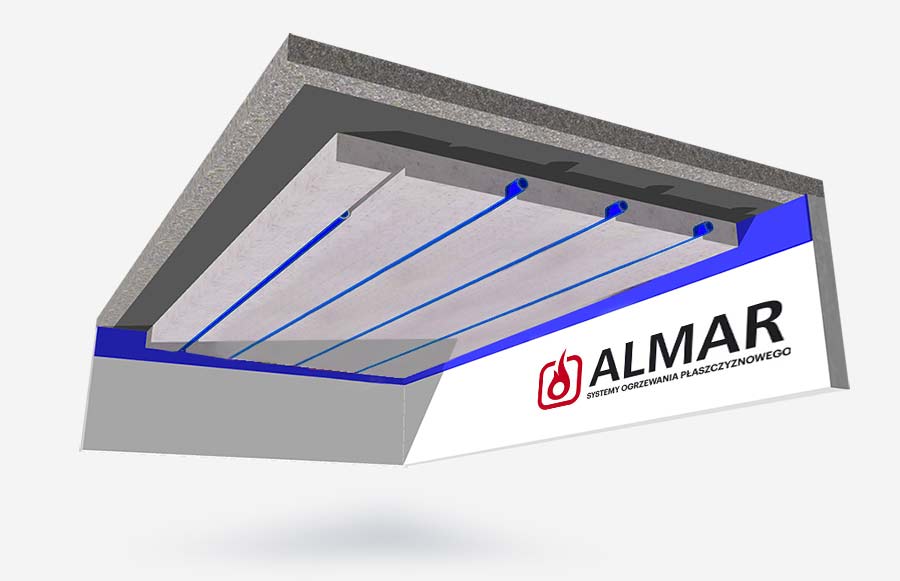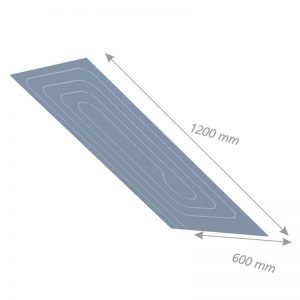Ceiling cooling
Wet ceiling cooling systems

Room temperature control with ceiling cooling
Wall heating, is very similar to underfloor heating in both construction and operation. Basically, one physical difference between the two types of heating is that one is installed in the floors and the other in the walls.
Almar PRO PANEL SUFFIT COOLING
ALMAR PRO system panels made of gypsum-woven fabric are designed for installation on the structure of suspended ceilings as well as standard ceilings, serving as a cooling and heating element.
Where we can use ceiling cooling
We use ceiling cooling most often in modular buildings, traditional wooden buildings, office buildings, industrial-utility buildings and sports facility spaces.
How cooling panels work
Cooling panels cool the liquid that circulates through which cools the air. This is a better cooling option than air conditioners or vents.
Ceiling cooling installation method
The panels are screwed to a previously prepared rack which is located on the ceiling as a so-called “frame”. suspended ceiling, we connect them with the help of quick connectors. Ceiling cooling works best with heat pump-reversion and ceiling heating works best with a variety of heat sources from heat pump, solid fuel heat sources, to electric heat sources. The cooling system is often used as a support solution for other surface heating and cooling systems. ALMAR PRO Panel can be used in individual rooms using surface heating with high-temperature heating, thus reducing the cost of investment and replacement of the old installation which involves costs.
They are often used to complement other heating and cooling solutions for radiant panels. Conventional ceiling heating and cooling systems are installed on suspended ceilings or directly on the ceiling. For office or commercial properties, activating the thermal element is a cost-effective and sustainable way to heat and cool buildings in an energy-efficient manner.
Water-carrying cooling ceilings can be used as a supplement if chilled air temperature control systems are insufficient. The cooling effect is achieved mainly through heat absorption, with convection a secondary function.
In some buildings, people, equipment, sunlight or lighting generate a very large amount of heat, making the temperature control systems for cooled air inadequate. Using a traditional chilled air conditioning system can cause interference from drafts, etc.
To reduce the amount of cooled air, water-carrying cooling ceilings can be used to supplement the system. No one can deny that the warmth of the sun has a very pleasant and immediate effect on cold days. Ceiling heating also radiates from above, with a mild air temperature below. All other objects in the room and all surrounding surfaces are also heated by radiant heat from the ceiling heating. Since the floor is thermally insulated, radiant heat from the ceiling is absorbed there, and the floor surface is even slightly warmer than the temperature inside. This means you don’t have to worry about cold feet with ceiling heating.
System Variants
Variant one
It has milled channels in the plate in the shape of a snail and marked places where the heating pipe is located for direct mounting on the frame or ceiling
Variant two
It has milled channels in the plate in the shape of a snail grouted heating pipe in the channels, the panel has additional insulation in the form of rock wool and marked places where the heating pipe is located for direct mounting on the frame or ceiling




